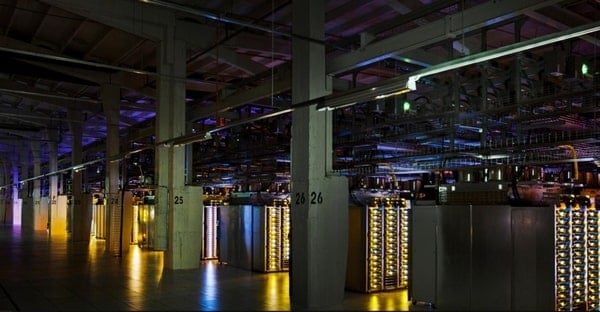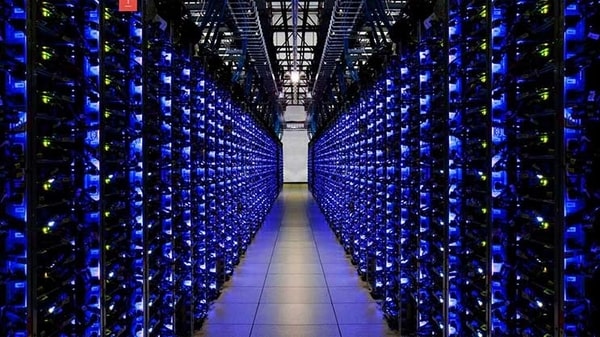
Data Center Colocation Trends for 2021
March 30, 2021
How to Utilize the Power of Data Center IT Services
April 14, 2021Many different things go into the speed of our connected devices. Network speed and bandwidth are oftentimes mixed up or thought of as the same thing, and although the two are interconnected, some differences are beneficial to understand. We’ll cover some specifics about both and what you can do to increase your network speed.

What Is Bandwidth?
A simple way to think about bandwidth is that it’s the amount of speed available for usage. While it may not be directly responsible for speed, it is the capacity that is available. Bandwidth is the volume of information per unit of time that a particular transmission medium can handle. An Internet connection with a larger bandwidth can move data faster and easier than a connection with lower bandwidth. If you think about it as a drinking straw, the larger or wider the straw is, the easier and faster you can drink or consume the liquid. Bandwidth is just one of the factors that go into how fast or how much data (or liquid) you consume.
Speed on the other hand is more of an overall general term that has many variables. It is generally determined by the physical signaling of the network. Your connection speed is linked to how fast the data within your bandwidth can be transferred. This also means that usually, the physical network can have less speed than the total bandwidth. So, although they are interrelated, there are other variables to take into account.

Network Latency Explained
When we are experiencing a slow connection, it can be a result of several different things. One of the things to keep in mind is latency, which can also be thought of as a delay. Latency measures the amount of time it takes for data to reach its final destination across the network. More specifically, it measures how long it takes to reach the destination and back to where it originated. Latency is typically quantified in milliseconds, and even a couple of milliseconds can cause multiple seconds of lag. That may not sound like a lot, but the world is so used to connection speeds being so immediate that a couple of seconds here and a couple of seconds there can end up being frustrating.
Network latency can be affected by several different things. Propagation delay, routing and switching, and queuing and buffering. Propagation delay measures the amount of time needed for a signal to circulate from one end of the circuit to the other. As the information makes its way to its destination, it will make its way through different controllers, routers, and switches. There is a possibility of some delays during these areas, but these delays are quite minuscule. Network latency can also be caused by queuing and buffering. If a particular link is experiencing a lot of traffic, the data can be placed in a queue to be processed later. The quantity of time the data is held up in the queue is known as queueing delay. The amount of data that is waiting to be processed is known as a buffer.
Latency affects application responsiveness making working on a network with some of these issues problematic. Again, all of these delays are measured in a matter of milliseconds, so you might not even notice it if you’re one of the more patient ones or if you’re just used to a slower connection.
Now, while some of these aspects are out of your control, there is an aspect of network latency that you can control—proximity.

How Does Proximity Affect Latency?
One of the things that you can control as a business or individual is proximity or how closer you are to your data center provider. The closer you are to the data center, the faster the data is processed. There are two different types of proximity, proximity to the business and proximity to your website visitors. There is a reason why there are certain areas in the world known as “data center hubs”. These places are the most densely populated areas. For example, in the United States, the data center hubs are located in New York City, Los Angeles, New Jersey, Washington DC, and Chicago.
Not only are many businesses located in these metropolitan areas, but there are also large populations of customers or at least potential customers in these areas. Businesses choose to have their networks and data center services in these areas because they are closer in proximity to many end-users.

How Can Colocation Solve Proximity and Latency Issues?
With all of this being said, closing the physical distance between the two parties will directly reduce the latency. As far as bandwidth is concerned, it will also increase the available bandwidth and allow quicker application response times. In our modern world, most businesses are online businesses, so reducing latency is vital. Closing the physical space between the business and its users will improve network optimization and improve the performance of all applications and websites.
Using a colocation service with locations in different data center hubs can help close the proximity in different areas. A data center colocation service that is strategically located data centers on the west coast, the northeast, south, and mid-west will be able to close the proximity gap for all of your current and future customers.

Conclusion
At the end of the day, what you are looking for is speed. The faster and better your network performs, the better overall experience your users and customers have. All of these aspects are interrelated and will affect how your website and online presence I for your customers. Understanding how network speed, bandwidth, and proximity affect your end-users can be beneficial for how your business performs. There are many moving parts to increasing your network speed but partnering with a trusted colocation data center provider will help you get the most out of your network and the most of your online presence.

